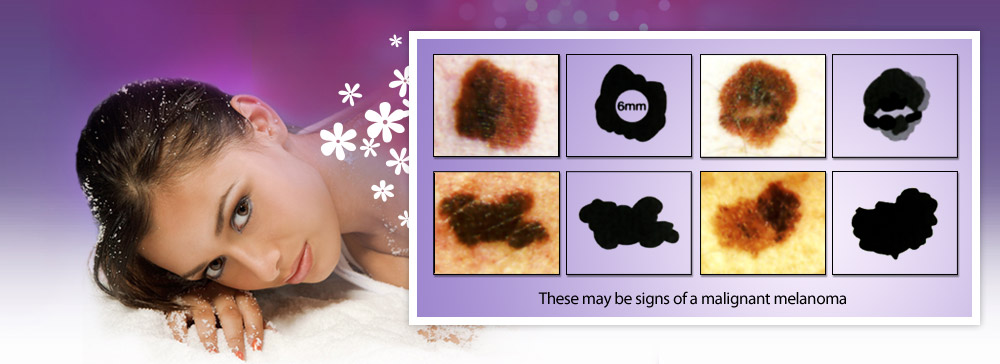
General Dermatology / Skin Cancer
You are your own first line of defense
Most of the spots on your skin - freckles, birthmarks, moles - are normal, but some may be skin cancers. There are three main types of skin cancer. Fortunately, they can usually be discovered at an early stage, when they are readily curable. If you ever spot these or any other suspicious or changing growths, see your doctor promptly. You are your own first line of defense. Basal Cell Carcinoma (BCC)
The most common form of skin cancer. BCC can appear as translucent or pearly bumps; white, yellow or waxy scar-like areas; pink growths with slightly elevated, rolled borders and a crusted indentation; open sores that bleed or ooze for weeks; and red, scaly patches on the head, chest, shoulders, arms or legs.Squamous Cell Carcinoma (SCC)
The second most common skin cancer. SCC can appear as wart-like, crusty growths or persistent open sores that may bleed; pink to red scaly patches with irregular borders; or elevated growths with a central depression that may rapidly increase in size.
Melanoma
The third most common and the most deadly form of skin cancer. Be alert to the ABCDEs of Melanoma: Asymmetry, Border irregularity, Color variability, Diameter over 1/4" and Evolving - any change in a lesion.
Most early melanomas are Asymmetrical: a line through the middle would not create matching halves. Common moles are round and symmetrical.
The Borders of early melanomas are often uneven and may have scalloped or notched edges. Common moles have smoother (more even) borders.
Common moles usually are a single shade of brown. Varied shades of brown, tan, or black can be the first sign of melanoma, and may progress to the Colors red, white, and blue.
Early melanomas usually grow larger than common moles - generally to at least the size of a pencil eraser (about 6mm, or 1/4" in Diameter).
When a mole is Evolving (changing), see a doctor. Be alert for any change - in size, shape, color, elevation, bleeding, itching, crusting or any other trait - in an existing mole.




